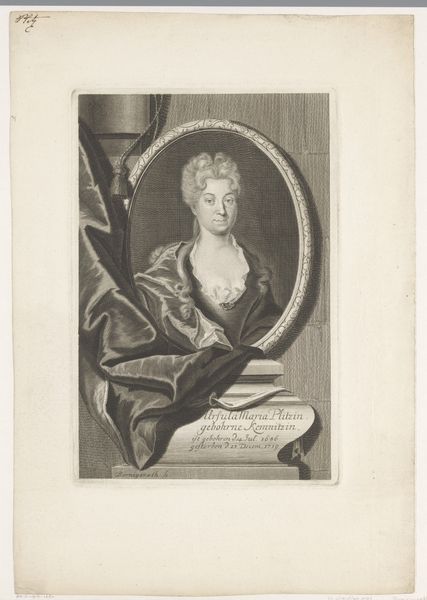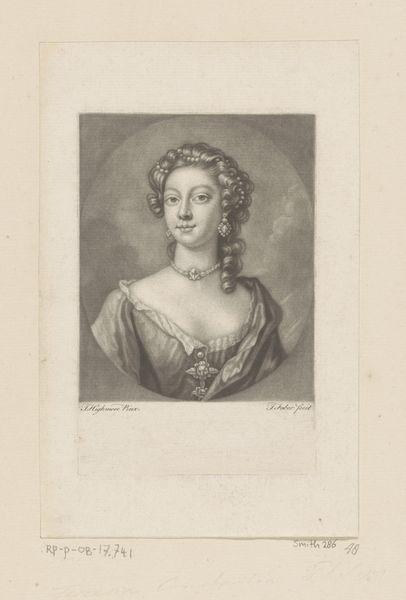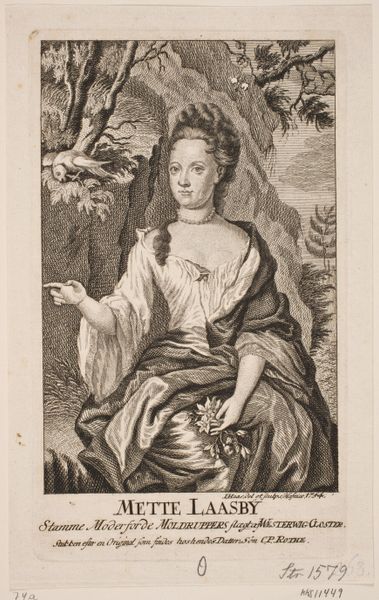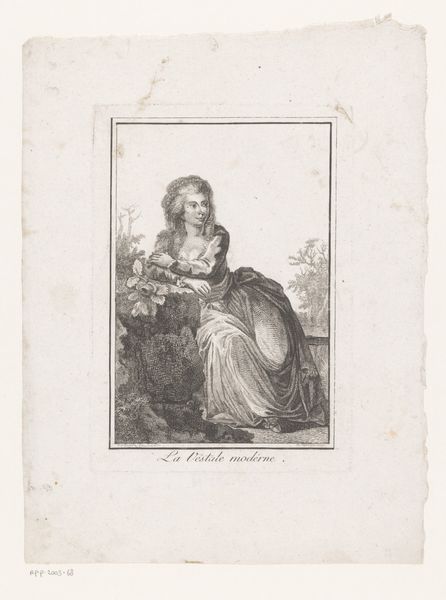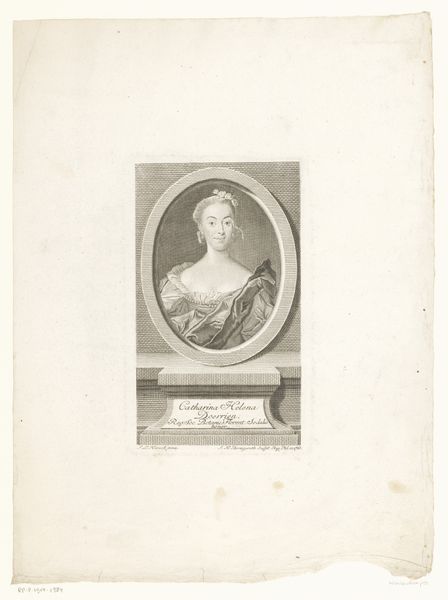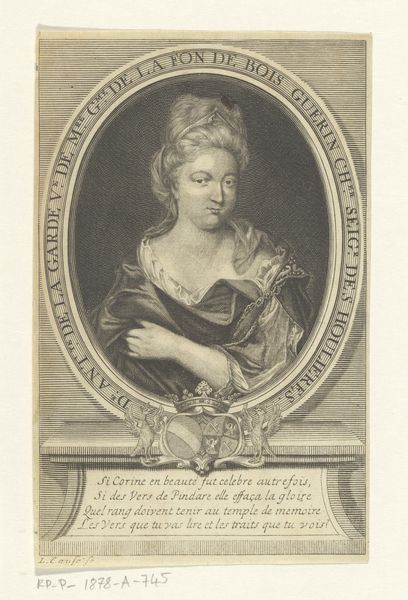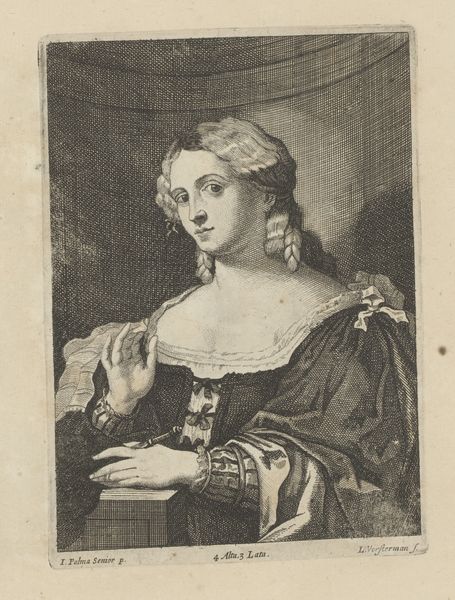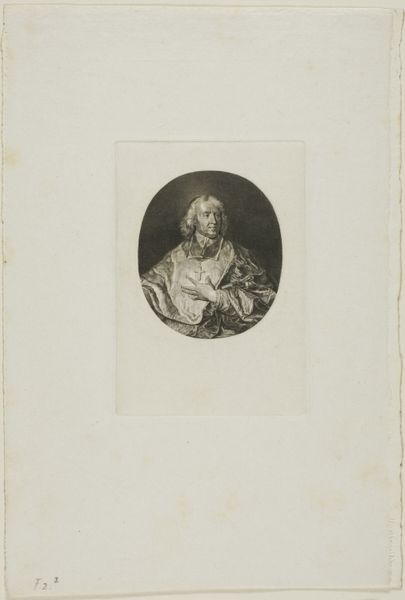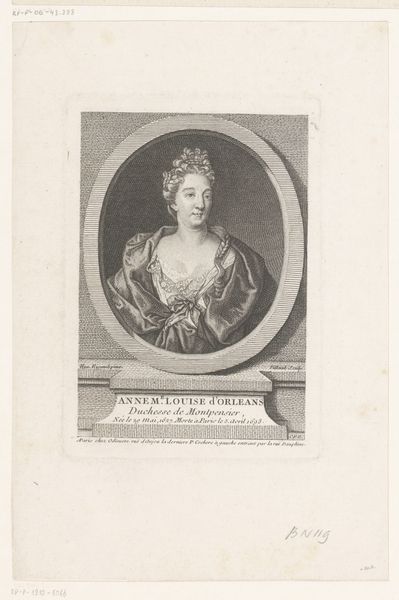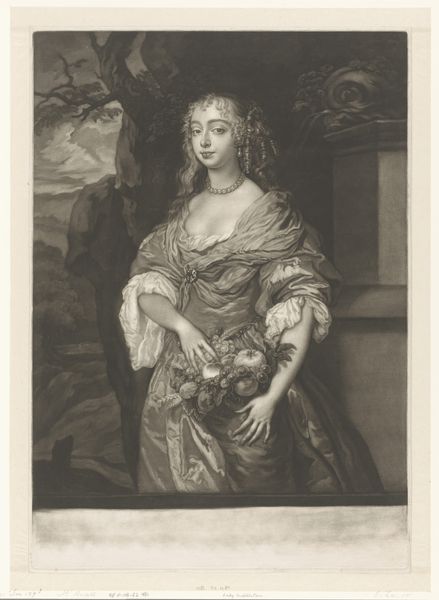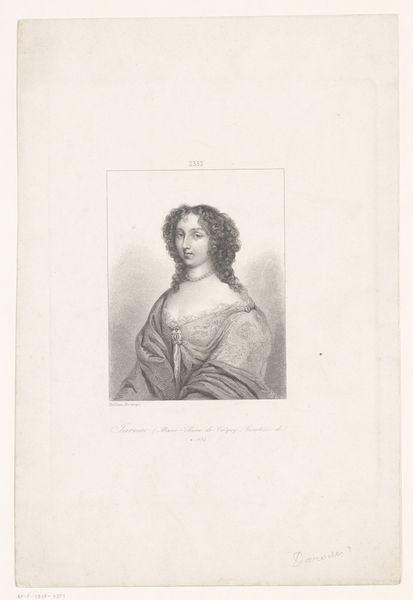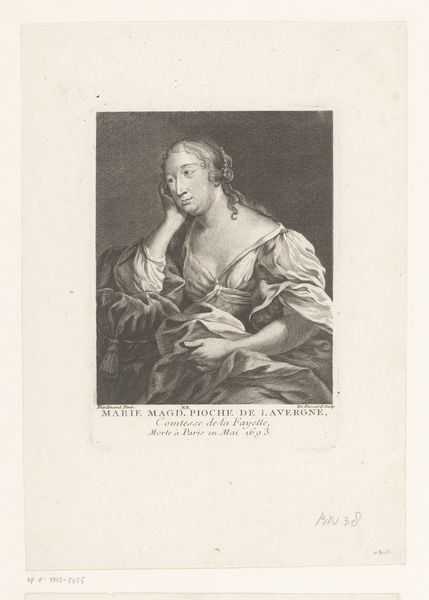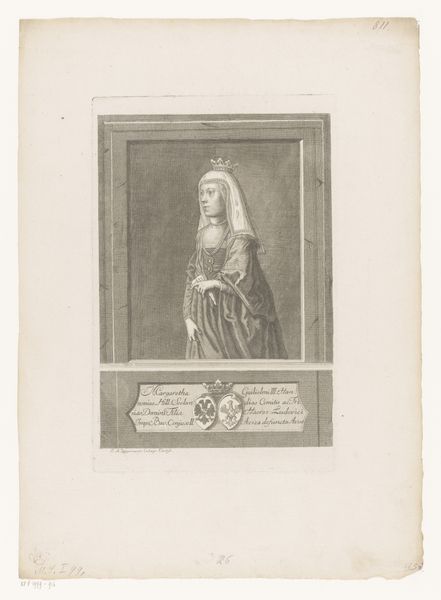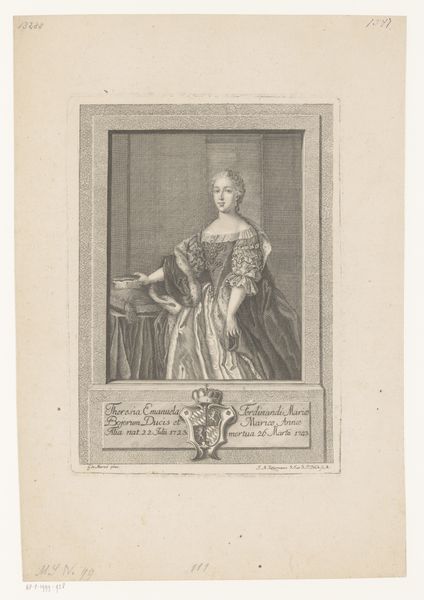
Dimensions: height 360 mm, width 289 mm
Copyright: Rijks Museum: Open Domain
Simon Charles Miger created this engraving, *Portret van Jacobus II van Engeland*, using a printmaking process known as line engraving. The image is made up of thousands of tiny lines incised into a copper plate, each one carefully placed to build up tone and detail. Think of it as a form of drawing, translated into a reproducible medium. The density and depth of the lines determine the amount of ink held and transferred to the paper, thus creating the image. This kind of printmaking was labor-intensive, requiring both technical skill and artistic ability, and became tied to the rise of a consumer society. Prints like these made images of the powerful accessible to a wider audience. It also provided employment for skilled artisans like Miger. So, next time you look at an engraving, consider not just the image it portrays, but the immense amount of work, skill, and social context that is embedded within the lines. It’s a reminder that even seemingly simple images are the result of complex processes and social relations.
Comments
No comments
Be the first to comment and join the conversation on the ultimate creative platform.
